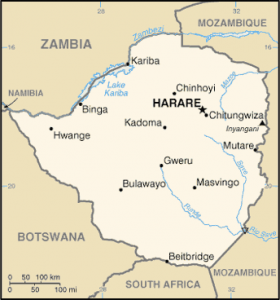The Zimbabwe Ministry of Health and Child Care says a new outbreak of typhoid, a waterborne disease, has killed nine people while 370 fresh cases were reported in Harare, Mutare and Chegutu, according to a report in the Zimbabwean today.

The disease outbreak has been attributed to councils’ failure to provide safe drinking water in suburbs, some have gone for months without running water. Portia Manangazira with the Ministry of Health and Child Care said, “We have been barking for a long time now that water be supplied to people if we are to combat typhoid, but it seems decisions haven’t been made to improve people’s lives.
“The moment adequate water isn’t supplied, it becomes difficult to maintain personal hygiene, to cook healthy food and everything else that has to do with water. At the end of day, water-borne diseases become rampant.”
Typhoid fever is a potentially life-threatening illness caused by the bacterium Salmonella typhi. Salmonella typhi lives only in humans. Persons with typhoid fever carry the bacteria in their bloodstream and intestinal tract. In addition, a small number of persons, called carriers, recover from typhoid fever but continue to carry the bacteria. Both ill persons and carriers shed S.typhi in their feces.
The symptoms for typhoid fever include a high fever, headaches, diarrhea or constipation, stomach pains, weakness, and loss of appetite. In some cases a flat, rose-coloured rash may appear on the torso.
You can get typhoid fever if you eat food or drink beverages that have been handled by a person who is shedding S. typhi or if sewage contaminated with S. typhi bacteria gets into the water you use for drinking or washing food. Therefore, typhoid fever is more common in areas of the world where handwashing is less frequent and water is likely to be contaminated with sewage. For more infectious disease news and information, visit and “like” the Infectious Disease News Facebook page
In 2014, Zimbabwe has recorded approximately 600,000 cases and more than 600 deaths due to dysentery and diarrhea to date.

